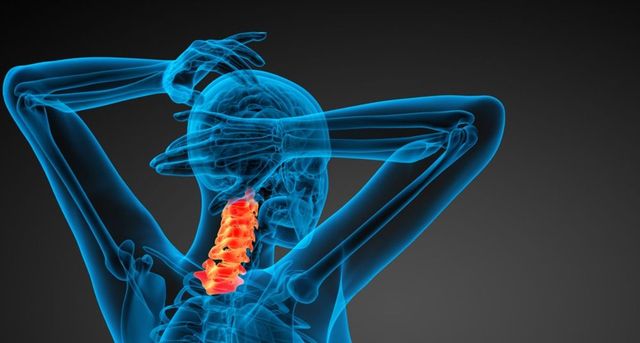Discover Family Chiropractic Approaches to Wellness
Wiki Article
Exploring Spinal Decompression Techniques: What You Need to Know for Better Spine Care
Spinal decompression methods are necessary for people experiencing persistent neck and back pain or spinal problems. These techniques range from non-invasive treatments to medical alternatives, each made to relieve pressure on the spinal column. Understanding these strategies is essential for reliable spine treatment. However, not all techniques are appropriate for every single condition. The nuances behind each method warrant more detailed assessment, as they can significantly affect recovery and overall health results. What variables should one consider before choosing?Comprehending Spinal Decompression
Spinal decompression might sound facility, it essentially refers to a selection of methods intended at easing pressure on the spinal cord and surrounding nerves. The back is a vital structure that sustains the body and secures necessary neurological paths. When compression happens, it can lead to pain, pain, and minimized flexibility. Understanding spinal decompression includes acknowledging the reasons of this stress, such as herniated discs, spinal stenosis, or injury. By dealing with these underlying issues, decompression techniques seek to restore appropriate placement and feature. This procedure can include both surgical and non-surgical approaches, customized to individual client demands. The objective is to enhance the top quality of life by soothing discomfort, enhancing stance, and facilitating far better movement. As understanding of spinal health expands, the relevance of recognizing spinal decompression ends up being progressively relevant for those seeking reliable therapy choicesTypical Spinal Decompression Methods
Spinal decompression techniques encompass an array of approaches developed to ease stress on the spine and its involved structures. These techniques can be generally classified into non-surgical and surgical strategies. Non-surgical techniques consist of spinal grip, where gentle pulling pressures are used to the spine, creating space in between vertebrae. This can ease nerve compression and promote healing. Chiropractic adjustments also drop under this category, concentrating on realigning the spine to improve feature.Surgical decompression strategies entail procedures such as laminectomy, where a portion of the vertebra is gotten rid of to alleviate stress on the spine or nerves. Discectomy, an additional surgical choice, requires the elimination of herniated disc product. Additionally, minimally intrusive techniques, like endoscopic discectomy, are obtaining popularity because of their lowered recovery times. Each technique serves a details purpose and might be picked based on specific person demands and the severity of their spinal condition.
Advantages of Spinal Decompression
When taking into consideration the numerous strategies to managing spinal concerns, the benefits of spinal decompression techniques come to be noticeable. These techniques aim to eliminate stress on the spinal discs and nerves, which can alleviate discomfort and boost general spinal health and wellness. By producing room in between vertebrae, decompression advertises improved blood flow and nutrient flow to the impacted locations, promoting healing and recuperation.Furthermore, spinal decompression can assist bring back the all-natural alignment of the spine, potentially minimizing the threat of future injuries. Patients commonly report boosted wheelchair and versatility list below therapy, resulting in a better quality of life. The decrease in stress can reduce signs linked with problems such as herniated discs, sciatic nerve pain, and spinal constriction, offering a non-invasive alternative to more invasive treatments. In general, spinal decompression methods supply a variety of physical and therapeutic benefits, making them a useful part of comprehensive back treatment.

Who Can Profit From Spinal Decompression?
Individuals dealing with chronic neck and back pain, herniated discs, or spinal constriction might discover significant alleviation through spinal decompression methods. This non-invasive therapy can be specifically useful for those experiencing nerve compression symptoms, such as tingling, tingling, or weakness in the limbs. Athletes recouping from injuries or people with degenerative disc disease might also take into consideration spinal decompression as a practical option for pain administration and enhanced movement.Prospects for spinal decompression commonly include those that have actually not reacted well to traditional therapies, such as medicines or physical therapy. It can additionally function as an option for clients seeking to avoid medical treatment. Generally, spinal decompression strategies can give a restorative option for numerous people dealing with spinal concerns, aiding them restore a greater high quality of life and useful ability. Consulting a healthcare specialist is important to figure out the suitability of this treatment for particular problems.
Factors to consider and Safety Measures for Spinal Decompression

The sort of spinal decompression strategy-- whether non-surgical or medical-- ought to straighten with the individual's certain condition and overall health condition. Surveillance throughout the treatment is essential to attend to any type of damaging responses immediately. Patients have to also comprehend that spinal decompression is not a one-size-fits-all option; an extensive treatment plan might consist of physical therapy or lifestyle modifications to sustain healing. Overall, sticking to these precautions can substantially improve the efficiency of spinal decompression therapies and advertise optimal back wellness.

Frequently Asked Questions
How much time Does a Regular Spinal Decompression Session Last?
A regular spinal decompression session lasts between 30 to 45 mins. This duration enables suitable therapy while making certain the person remains comfy and obtains appropriate attention to their specific spinal concerns and demands.Can Spinal Decompression Be Done in your home?
Spinal decompression can be done in the house with particular workouts and tools, such as inversion tables or back braces. Appointment with a medical care professional is suggested to guarantee security and effectiveness in specific situations.Is Spinal Decompression Painful?
Spinal decompression is normally not excruciating; however, people might experience mild discomfort or pressure during the treatment. Discomfort degrees can vary based upon the person's condition and the technique utilized for decompression.The Number Of Procedure Are Generally Needed for Alleviation?
Generally, individuals may require 6 to 10 sessions of spinal decompression treatment to experience considerable alleviation (Spinal Decompression). The exact number can vary based on specific conditions and feedbacks to therapy, requiring personalized assessment by medical care professionals.Exist Any Type Of Age Constraints for Spinal Decompression?
There are generally no stringent age restrictions for spinal decompression treatment. Nonetheless, suitability might rely on specific health conditions and the specific method made use of, so assessment with a health care expert is advised for customized guidance.Spinal decompression techniques are important for individuals experiencing persistent back discomfort or spinal problems. Spinal website decompression may appear facility, it fundamentally refers to a range of techniques intended at easing pressure on the spinal cable and surrounding nerves. When taking into consideration the various approaches to taking care of spinal concerns, the benefits of spinal decompression techniques end up being obvious. People suffering from persistent back discomfort, herniated discs, or spinal constriction may discover substantial relief through spinal decompression methods. On the whole, spinal decompression strategies can supply a restorative choice for various people facing spinal issues, helping them reclaim a higher high quality of life and practical capability.
Report this wiki page